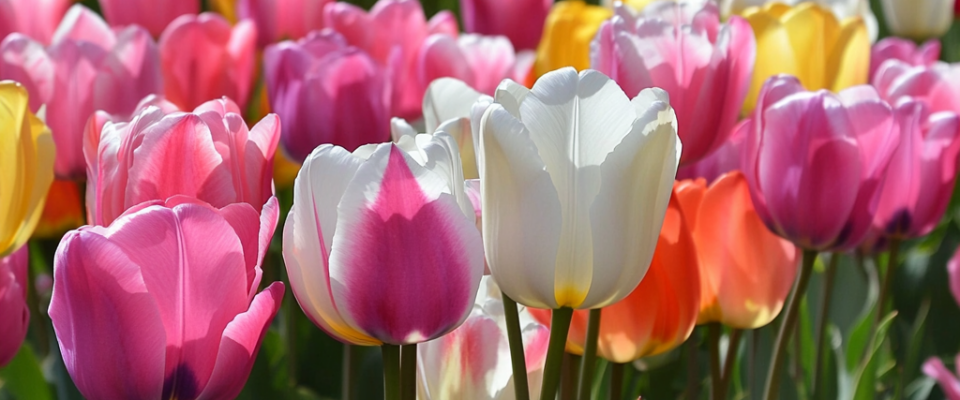The history and traditions of seasonal flower exhibitions in botanical gardens
Seasonal flower exhibitions in botanical gardens have a long history dating back to the Renaissance. It was at this time that European gardens became places where rare and exotic plants brought from distant countries were displayed. Gradually, these demonstrations turned into annual events that attracted the attention of not only botanists, but also the general public.
Such exhibitions have become an important tradition in botanical gardens around the world. They not only demonstrate achievements in the field of plant breeding and cultivation, but also contribute to the development of culture and art. Flower exhibitions allow visitors to enjoy the beauty of nature, learn more about the plant world and get acquainted with various traditions of floriculture. Nowadays, they have become an integral part of the calendar of events in many botanical gardens and play an important role in their popularization.
A variety of seasonal flower exhibitions: spring, summer, autumn and winter exhibitions
Seasonal flower exhibitions vary by season and the types of plants represented. Each of them reflects the peculiarities of a particular season and offers unique compositions:
- Spring exhibitions: These expositions are dedicated to the first flowers symbolizing the awakening of nature. Tulips, daffodils, hyacinths and cherry blossom often become the main characters of spring exhibitions. This is the time when botanical gardens are filled with bright colors and aromas after the winter period.
- Summer exhibitions: Summer is a time of variety and abundance of flowers. At the summer exhibitions, you can see roses, lilies, hydrangeas, as well as numerous exotic plants. Summer exhibitions are often accompanied by various events such as outdoor concerts and gardening workshops.
- Autumn exhibitions: Autumn brings a wealth of shades and textures. The main focus is on chrysanthemums, dahlias, as well as perennial plants and ornamental grasses. Autumn exhibitions focus on the fruits of nature and conclude the flowering season before the onset of winter.
- Winter Exhibitions: Despite the cold season, winter flower exhibitions are also popular. The basis of the expositions are often plants that are resistant to low temperatures, such as Christmas stars, amaryllis and a variety of conifers. Winter gardens and greenhouses create a cozy atmosphere, allowing you to enjoy the plant beauty even in the cold season.
Organization and preparation for seasonal flower exhibitions
Organizing seasonal exhibitions in botanical gardens is a complex and time—consuming process that requires detailed planning and coordination. Gardening specialists begin training well before the start of the season to ensure proper plant care and create spectacular flower arrangements. One of the key aspects is the selection of suitable varieties and species of plants that should be harmoniously combined in color, shape and texture. It is necessary to take into account the climatic conditions and the possibilities of the garden to ensure optimal growth and flowering conditions.
In addition, specialized equipment is often required to maintain the required humidity and temperature levels in greenhouses and greenhouses. The organization of exhibitions also includes the work of designers and landscape architects who create artistic compositions that emphasize the beauty and uniqueness of each plant. Florists are often involved, whose task is to create creative and impressive installations.
The importance and role of seasonal flower exhibitions in the ecology and conservation of rare plants
Seasonal exhibitions in botanical gardens play an important role in preserving biodiversity and protecting rare plant species. They draw public attention to environmental issues and the importance of preserving natural resources. Botanical gardens often use such exhibitions to promote the sustainable use of plants and environmental protection. One of the key tasks of the botanical gardens is the conservation of rare and endangered species. Seasonal exhibitions become an excellent platform for demonstrating these plants and their adaptive abilities.
Visitors have the opportunity to see rare species that may be endangered in the wild, as well as learn about the measures taken to preserve them. These events promote the exchange of knowledge and information between scientists, botanists and ordinary plant lovers, helping to draw attention to environmental issues and the need to protect biological species.
The influence of flower exhibitions on the cultural and tourist development of the regions
Seasonal flower exhibitions in botanical gardens have a significant impact on the cultural and tourist development of the regions. They attract a large number of visitors, stimulating the development of tourist infrastructure and the local economy. Many botanical gardens have become real tourist attractions, which annually attract thousands of visitors from all over the world.
Flower exhibitions are often accompanied by cultural events such as festivals, concerts and art exhibitions, which contribute to the development of the cultural life of the region. Such events increase interest in floristry, gardening and landscape design, as well as local traditions and cultural heritage. In addition, seasonal exhibitions become a source of inspiration for artists, designers and florists, contributing to the development of art and new creative directions.
Seasonal flower exhibitions as a source of inspiration for creating perfume compositions
One of the interesting aspects of seasonal flower exhibitions in botanical gardens is their impact on the world of perfumery. Many famous perfumers draw inspiration from the scents of flowering plants presented at these exhibitions. The smells of fresh flowers, their combinations and the play of shades stimulate the creation of unique perfume compositions. Botanical gardens provide an opportunity to explore the variety of flavors in their natural state.
This allows perfumers to better understand how different plants interact with each other, and how these complex bouquets can be reproduced in perfumes. Spring tulips, summer roses, autumn chrysanthemums and winter coniferous scents are often reflected in the creation of new perfumes and aromatic lines. Thus, seasonal flower exhibitions become an important part of cultural exchange and stimulate the development of new ideas in perfumery. They help to connect the world of nature and art, creating unique scents that transport people to flower gardens, even when they are far from them.
Questions and Answers
Seasonal flower exhibitions have a rich history dating back to the Renaissance when European gardens showcased rare and exotic plants. These events evolved into annual traditions that not only highlighted advancements in plant cultivation but also fostered cultural and artistic development.
Each seasonal exhibition showcases plants that reflect the characteristics of that particular time of year. Spring exhibitions feature flowers like tulips and daffodils, summer showcases roses and exotic plants, autumn highlights chrysanthemums and ornamental grasses, while winter exhibitions focus on cold-resistant plants like Christmas stars and amaryllis.
Organizing these exhibitions requires detailed planning, including selecting suitable plant varieties, ensuring optimal growth conditions, and utilizing specialized equipment for humidity and temperature control. Designers and florists also play key roles in creating artistic compositions that enhance the beauty of the plants.
These exhibitions raise public awareness about biodiversity and the importance of preserving rare and endangered plant species. They provide a platform for demonstrating conservation efforts and promote the sustainable use of plants, encouraging visitors to engage with environmental protection initiatives.
Seasonal flower exhibitions attract many visitors, boosting local tourism and economic growth. They often coincide with cultural events like festivals and art exhibitions, enhancing the region’s cultural life and inspiring local artists and designers, while fostering interest in gardening, floristry, and landscape design.

